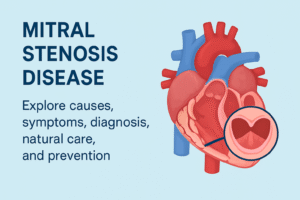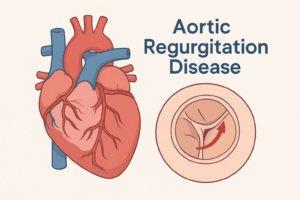Introduction
Urolithiasis, also known as nephrolithiasis or urinary stone disease, refers to the formation of solid crystalline deposits—commonly called stones—within the urinary tract. These can occur in the kidneys, ureters, bladder, or urethra.
They form when certain minerals and salts in the urine become too concentrated, leading to crystallization and eventually the growth of stones.
Causes of Urolithiasis / Nephrolithiasis
Urolithiasis results from a combination of metabolic, dietary, lifestyle, urinary tract, systemic, and genetic factors.
1. Metabolic Causes
- Hypercalciuria – Excess calcium in urine (e.g., hyperparathyroidism, vitamin D excess)
- Hyperoxaluria – High oxalate from diet (spinach, rhubarb, tea) or bowel diseases
- Hyperuricosuria – High uric acid from gout or high-purine diet
- Hypocitraturia – Low citrate, a natural inhibitor of stones
- Cystinuria – Genetic defect causing excess cystine in urine
2. Dietary and Lifestyle Factors
- Low fluid intake → concentrated urine
- High sodium → increases calcium excretion
- High animal protein → increases uric acid, lowers citrate
- High oxalate diet → spinach, nuts, chocolate, tea
- Excess sugar / refined carbs → alters urinary chemistry
3. Urinary Tract Conditions
- UTIs (especially with Proteus, Klebsiella) → struvite stones
- Urinary stasis from obstruction → enlarged prostate, ureteral stricture
- Abnormal pH:
- Alkaline urine → calcium phosphate & struvite
- Acidic urine → uric acid
4. Systemic Diseases
- Hyperparathyroidism
- Renal tubular acidosis
- Gout
- Diabetes/metabolic syndrome
- Inflammatory bowel disease / chronic diarrhea
5. Genetic / Familial
- Family history increases risk
- Primary hyperoxaluria
Note: Excess vitamin C can raise oxalate levels.
Reference: Mayo Clinic – Kidney Stones
Stages of Kidney Stone Development
1. Formation: Urine supersaturated with stone-forming substances → crystals form in renal tubules
2. Growth: Crystals enlarge and aggregate in papillae or calyces
3. Migration: Stone moves into ureter, bladder, or urethra
4. Symptomatic Stage: Renal colic, hematuria, nausea, possible hydronephrosis
5. Complications: Hydronephrosis, pyonephrosis, chronic kidney disease, sepsis
Reference: National Kidney Foundation
Symptoms of Urolithiasis / Nephrolithiasis
- Pain: Severe flank pain radiating to groin
- Urinary symptoms: Burning urination, urgency, frequency
- Hematuria: Blood in urine (microscopic or visible)
- GI symptoms: Nausea, vomiting, abdominal discomfort
- Fever & chills: Suggests infected obstructive uropathy (medical emergency)
- Other: Restlessness, sweating, pallor, foul-smelling urine
Diagnosis
1. History & Physical Examination
- Pain pattern, urinary symptoms, fever, past stone history
- Physical signs: costovertebral tenderness, dehydration
2. Laboratory Tests
- Urinalysis: Blood, crystals, pH, infection
- Blood tests: Kidney function, electrolytes, uric acid, calcium, phosphate
3. Imaging
- CT Scan (non-contrast): Gold standard
- Ultrasound: Preferred for pregnancy, children
- X-ray KUB: Detects radiopaque stones
4. Stone Analysis
- Determines chemical composition for prevention planning
Reference: American Urological Association
Prevention Strategies
- Hydration: 2.5–3 liters/day, aim for pale yellow urine
- Diet:
- Lower sodium (<2,300 mg/day)
- Adequate calcium intake
- Limit oxalate foods (spinach, nuts, chocolate)
- Reduce animal protein
- Avoid excess sugar/fructose
- Lifestyle: Maintain healthy weight, regular activity, avoid dehydration
- Follow-up: Regular urine/blood tests, imaging if needed
Global Impact of Kidney Stones
- Prevalence: 10–15% lifetime risk globally
- High-risk regions: Middle East, Southeast Asia, Indian subcontinent, southern USA
- Recurrence: 50% within 5–10 years without prevention
- Economic burden: Billions spent annually on diagnosis, treatment, and hospitalization
Reference:
Key Takeaway
Kidney stone disease is preventable in many cases through proper hydration, dietary adjustments, and lifestyle changes. Early diagnosis and treatment reduce complications and recurrence risk.






